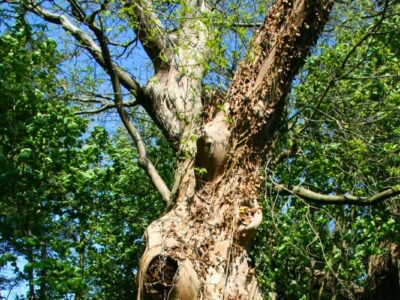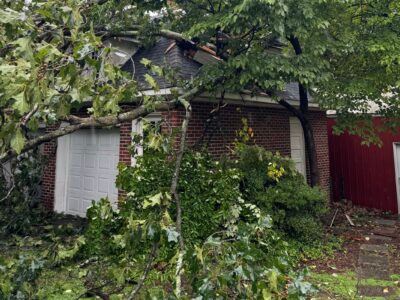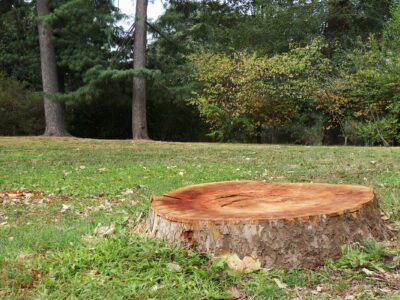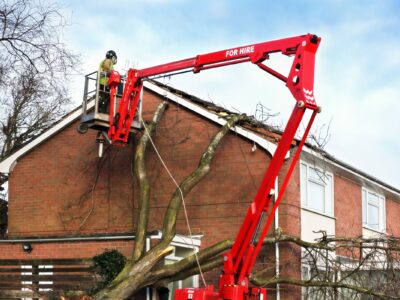Advantages of Winter Tree Pruning
October 11, 2023
Discover the advantages of winter tree pruning in Forsyth County! Uncover secrets for healthier, safer, and more beautiful trees!
Challenging the misconception that winter is a subpar season for tree care, this article highlights the often-overlooked advantages of winter tree pruning in the Winton-Salem, North Carolina, area.
While it’s true that trees can be pruned any time of year, this article will explore how a tree’s dormant period facilitates efficient pruning and trimming, mitigates disease spread, and optimizes tree health and aesthetics.
Let’s begin by discussing why we prune North Carolina trees.
Why Trees Require Pruning
In Forsyth County, as in other regions, trees necessitate pruning, particularly during winter, to maintain their health and structural integrity. This process involves the selective, strategic removal of limbs and branches. Tree pruning is not merely an aesthetic practice but serves several crucial functions.
For instance, pruning helps manage the tree’s size, shape, and direction of growth, ensuring it does not interfere with buildings, power lines, or other structures. More importantly, removing dead, diseased, or insect-infested branches can promote the tree’s health.
To summarize, pruning keeps your trees healthy, safe, and aesthetically pleasing.
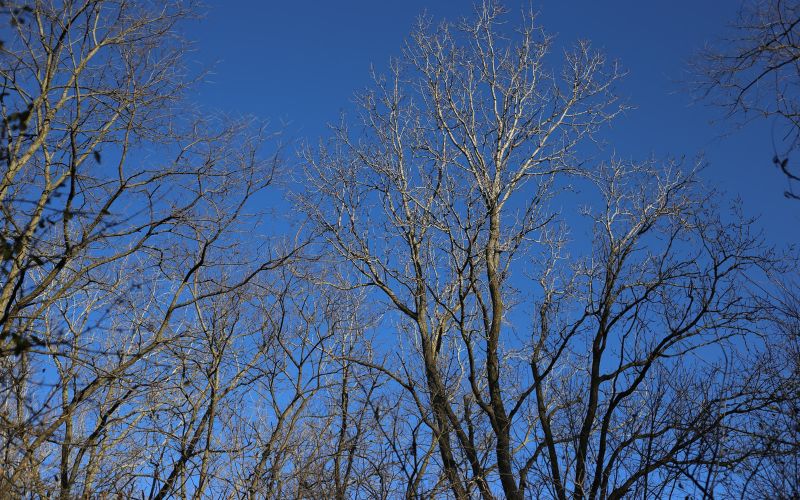
Increased branch visibility is one advantage of winter tree pruning.
The Advantages of Winter Tree Pruning and Trimming
The dormant season provides an ideal opportunity for tree maintenance, offering numerous benefits for their health and aesthetics. Winter pruning and trimming is advantageous for several reasons:
- During the winter, the structure of trees is more visible, making it easier for arborists to identify any dead or potentially dangerous branches that require pruning. This ensures that the trees remain safe and attractive.
- Trees pruned during the dormant season show better growth in spring as they, with more available energy, recover quickly from the cuts. This allows the trees to devote their energy to foliage growth come spring. Furthermore, winter pruning helps in preventing the spread of diseases that are active in the warmer seasons. During winter, most disease-causing organisms are dormant or dead, reducing the chances of disease transmission through pruning.
- Efficiency is another benefit of winter pruning. In colder climates, the frozen ground allows for the use of heavy equipment without damaging the landscape, leading to faster work at lower costs. Moreover, pruning during winter causes less stress as it doesn’t stimulate new growth, such as water sprouts or “suckers.”
Overall, winter pruning offers a valuable opportunity for optimal tree care.
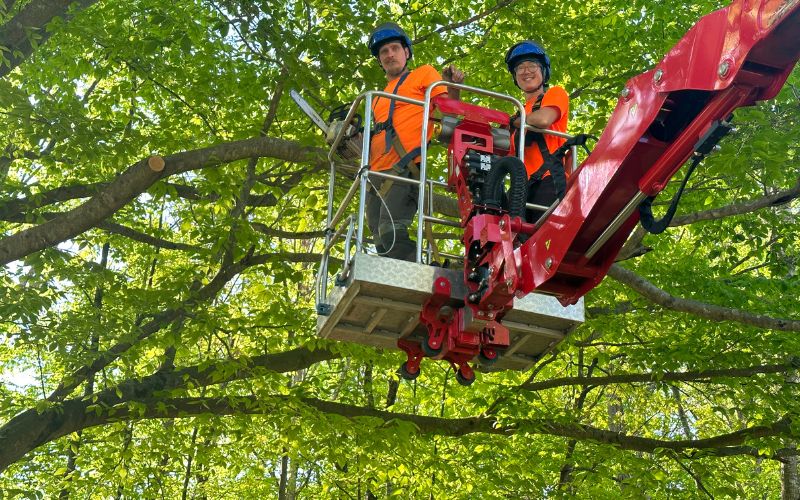
Though winter tree pruning has its advantages, pruning and trimming can be done any time of year.
Can You Still Prune and Trim Trees in the Spring and Summer?
Yes. Despite the advantages of the dormant season, tree pruning is not solely a winter activity but can also be effectively accomplished during the warmer seasons of spring and summer. When to prune trees is determined by a variety of factors, including the species of the tree, its health, and the specific objectives of pruning.
The following points highlight the advantages of spring and summer pruning:
- The identification of deadwood: While skilled arborists can typically detect deadwood during dormancy, it can be challenging for certain tree species. The warmer seasons, when trees are in full foliage, allow for easier recognition of dead or dying branches.
- The timely removal of hazardous branches: Spring and summer pruning can address branches that pose a safety risk due to damage or disease. This can ensure both the health of the tree and the safety of its surroundings, so you don’t want to wait to remedy these issues.
- The enhancement of the tree’s appearance: The tree’s shape can change as it “leafs out” in the warmer months. Spring and summer pruning can improve the aesthetic appearance of the tree, adjusting its shape to be more pleasing and balanced.
So, while winter pruning has its advantages, it does not negate the importance of regular pruning throughout the year. Regular pruning in any season will ensure the health, safety, and longevity of trees.
Winter Tree Pruning – Frequently Asked Questions
What type of trees are best pruned in the winter in North Carolina?
In North Carolina, deciduous trees, including fruit trees, oak, and elm, are best pruned in winter. This allows for efficient evaluation of tree structure and reduces the risk of disease transmission during the dormant period.
Are there any challenges or risks associated with pruning trees in the winter?
Winter tree pruning poses certain challenges and risks. These include potential damage to tree tissues from extreme cold, potential difficulty identifying dead branches in dormant trees, and the risk of removing spring flower buds prematurely.
How does winter pruning affect the health of the trees in the long term?
Winter pruning promotes long-term tree health by limiting disease spread, encouraging wound closure before insect and pathogen emergence, and rejuvenating weaker trees by removing dead or diseased wood, thereby preventing winter damage.
Are there any specific tools or techniques recommended for winter tree pruning?
Winter tree pruning and trimming generally involve tools such as hand pruners, loppers, and pole saws. Techniques recommended include making clean cuts, pruning back to a branch or bud, and avoiding cuts that leave stubs. In the case of large trees, a bucket truck or crane could be necessary for efficient winter tree pruning.
How does winter tree pruning impact the wildlife that may inhabit the trees?
Winter pruning may temporarily displace wildlife inhabiting the trees. However, it ultimately benefits them by promoting healthier tree growth and reducing the risk of tree damage due to disease or weak branches.
Have more questions about when to prune and trim your trees? Check out this seasonal pruning calendar from North Carolina University Cooperative Extension.
Winter Tree Pruning – Final Thoughts
Winter pruning proves advantageous for trees, as evidenced by the rapid recovery of trees in North Carolina following a harsh winter. This practice promotes optimal tree health by reducing the risk of disease transmission, minimizing landscape damage, and facilitating efficient wound healing.
It also enhances spring aesthetics by eliminating dead or hazardous branches during winter dormancy. However, it’s critical to delay pruning for early spring-flowering species until post-blooming to preserve flower buds.
Ready to Schedule Your Winter Pruning?
Call Godspeed Tree Service today at 336-399-8348. We’re Forsyth County and the Winston-Salem area’s tree care experts. Let us care for your trees this winter and all year long. Our team has the knowledge, skill, and experience to handle your pruning and trimming or any other tree maintenance service you need!

Godspeed Tree Service
Owned and operated with high standards and consistent reliability by Bobby Gates, Godspeed Tree Service has earned the trust of the North Carolina Triad community over the course of more than 25 years in business. With a strong emphasis on safety, conscientious training, and accommodating the needs of each client, you can't go wrong by hiring Godspeed for any of your tree service needs!
